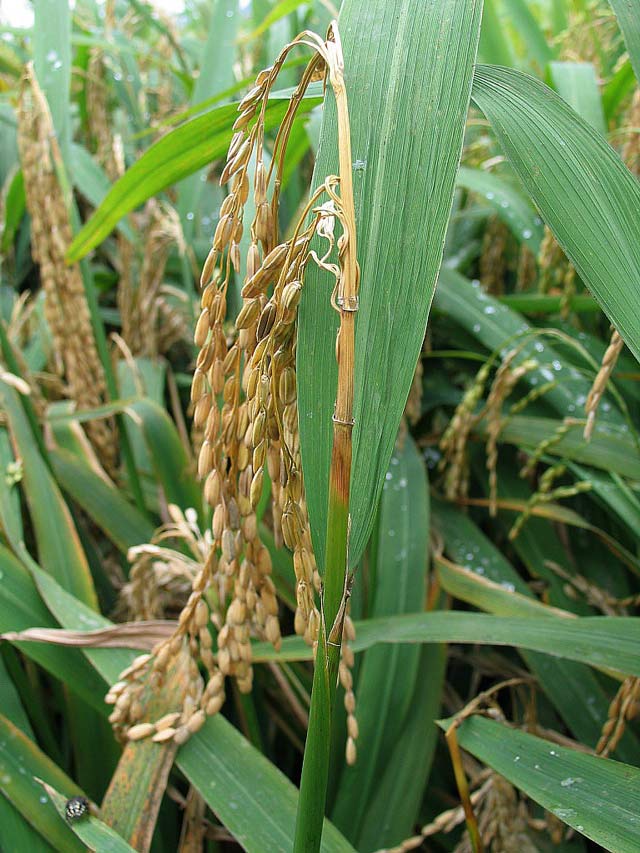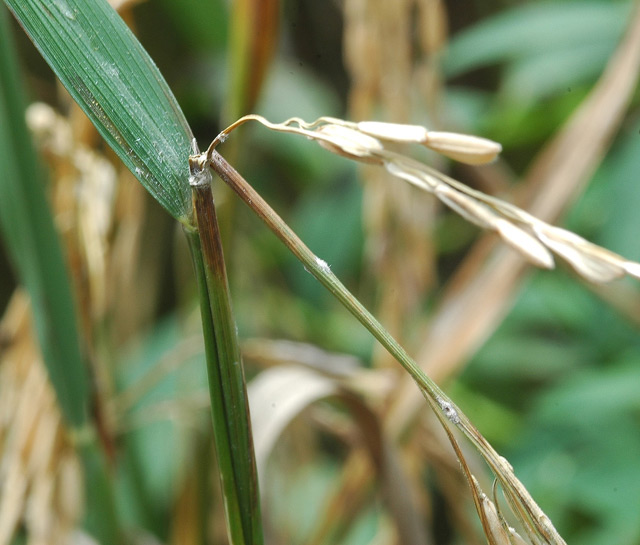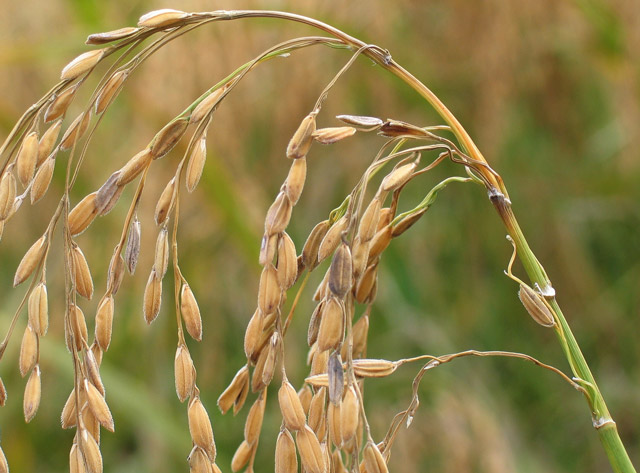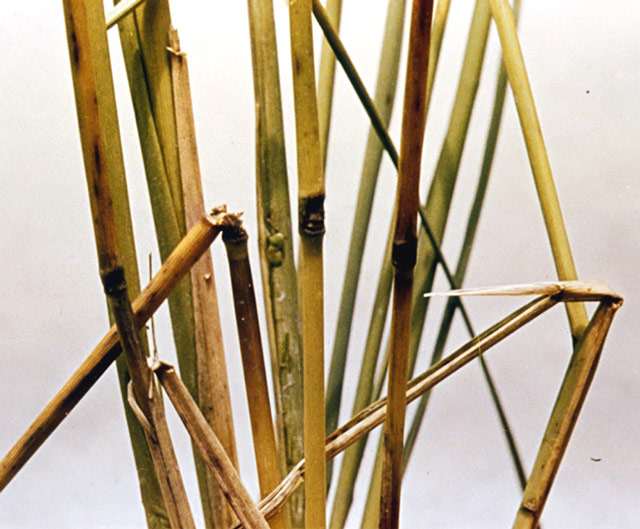Blast (node and neck)
 What it does
What it does
Blast is caused by the fungus Magnaporthe oryzae. It can affect all above ground parts of a rice plant: leaf, collar, node, neck, parts of panicle, and sometimes leaf sheath.
Node and neck blast commonly occur together and have similar symptoms.
When a node or neck blast infection is present, it can cause plants to develop few or no grains at all.
Why and where it occurs
Blast can occur wherever blast spores are present.
It occurs in areas with low soil moisture, frequent and prolonged periods of rain shower, and cool temperature in the daytime. In upland rice, large day-night temperature differences that cause dew formation on leaves and overall cooler temperatures favor the development of the disease.
Rice can have blast in all growth stages. However, leaf blast incidence tends to lessen as plants mature and develop adult plant resistance to the disease.
How to identify
Check the nodes and necks for lesions and rotting:
- Node infection occurs in banded pattern.
- Lesions on the node are blackish to grayish brown.
- Infected nodes can cause the culm or the part of the plant that holds the panicle to break.
- Lesions on the neck are grayish brown and can cause girdling, making the neck and the panicle fall over.
- If infection of the neck occurs before milky stage, no grain is formed, but if infection occurs later, poor quality grains are formed.
- Neck and node blast can also cause whiteheads or white panicles, similar to stem borer infection.
- Whiteheads caused by stem borers can be pulled apart from the plant, the stem will separate at the point where the insect bored into it.
- With neck and node blast, tugging on the stem will not result in removal.
Why is it important
Rice blast is one of the most destructive diseases of rice. Because neck and node blast affect the panicle directly, yield losses in affected plants are very high.
How to manage
The primary control option for blast is to plant resistant varieties. Contact your local agriculture office for up-to-date lists of varieties available.
Other crop management measures can also be done, such as:
- Adjust planting time. Sow seeds early, when possible, after the onset of the rainy season.
- Split nitrogen fertilizer application in two or more treatments. Excessive use of fertilizer can increase blast intensity.
- Flood the field as often as possible.
Silicon fertilizers (e.g., calcium silicate) can be applied to soils that are silicon deficient to reduce blast. However, because of its high cost, silicon should be applied efficiently. Cheap sources of silicon, such as straws of rice genotypes with high silicon content, can be an alternative.
Care should be taken to ensure that the straw is free from blast as the fungus can survive on rice straw and the use of infected straw as a silicon source can spread the disease further.
Systemic fungicides like triazoles and strobilurins can be used judiciously for control to control blast. A fungicide application at heading can be effective in controlling the disease in cases where the risk of yield losses is high.


